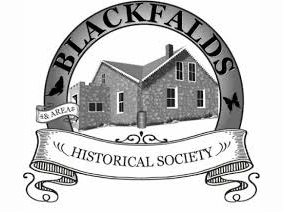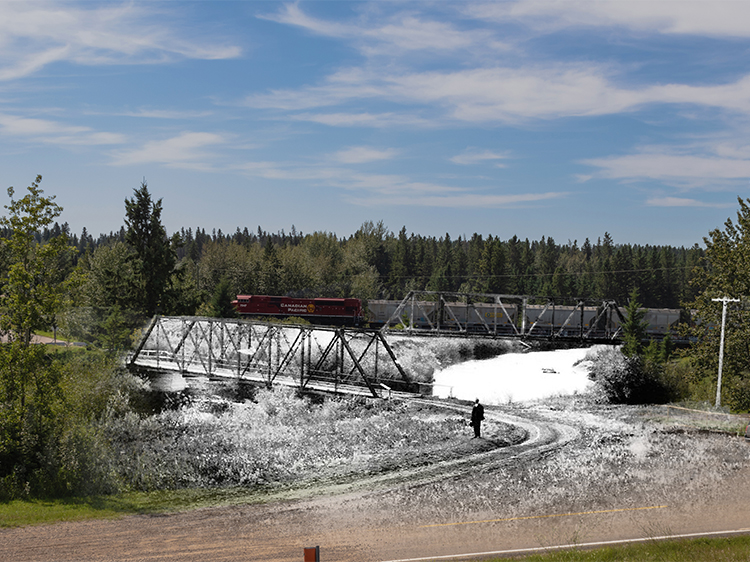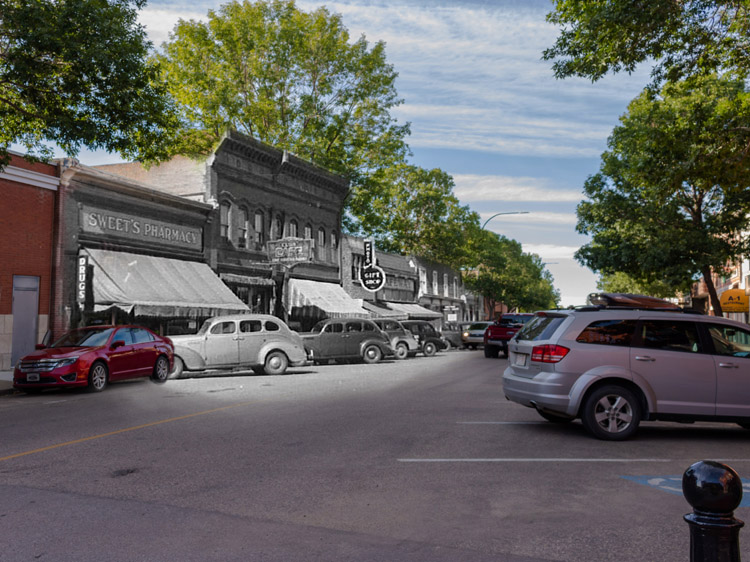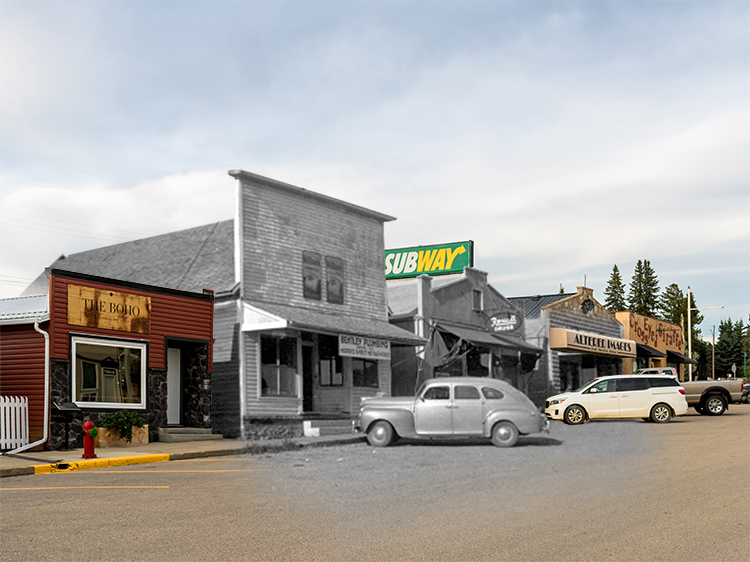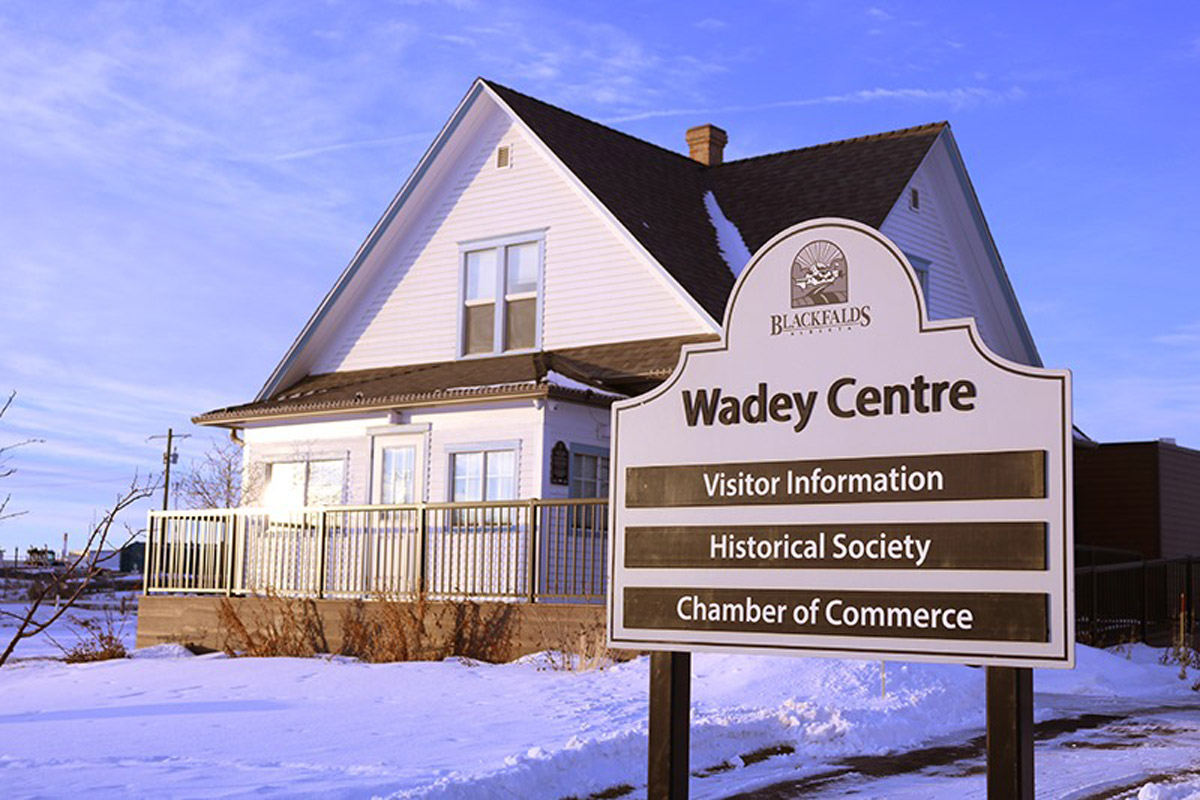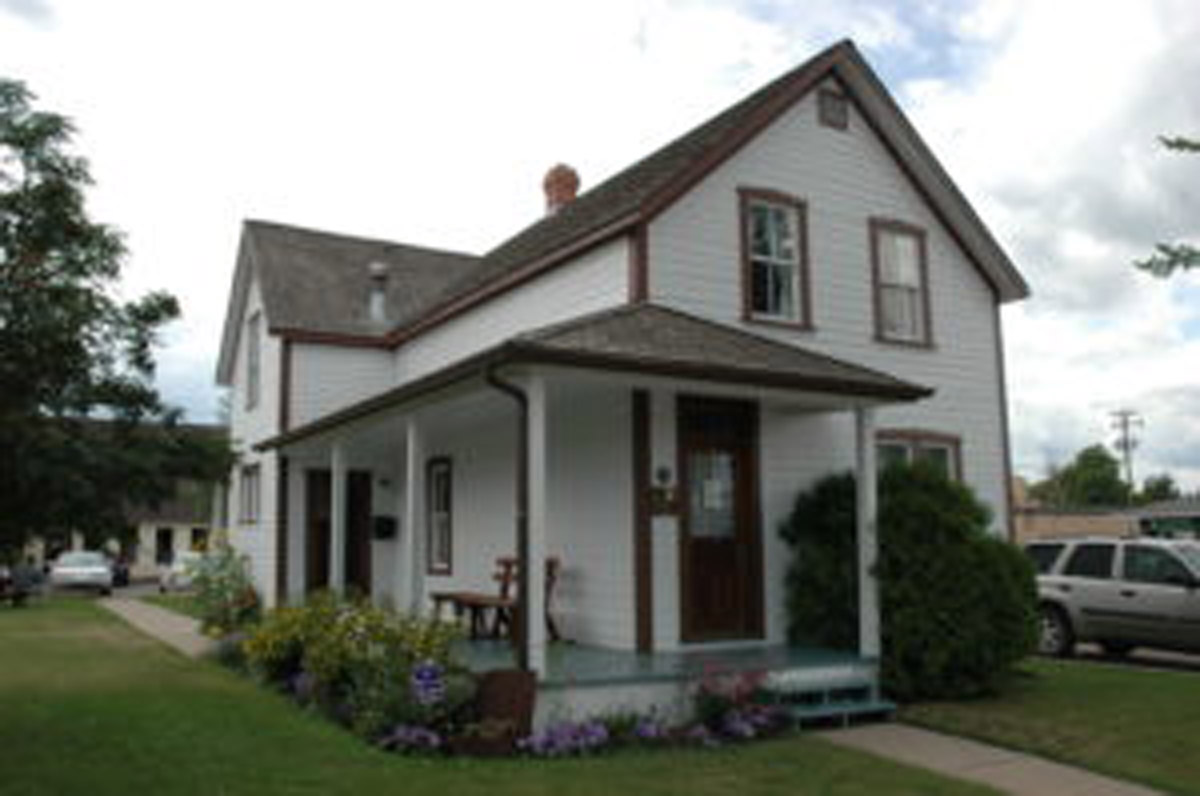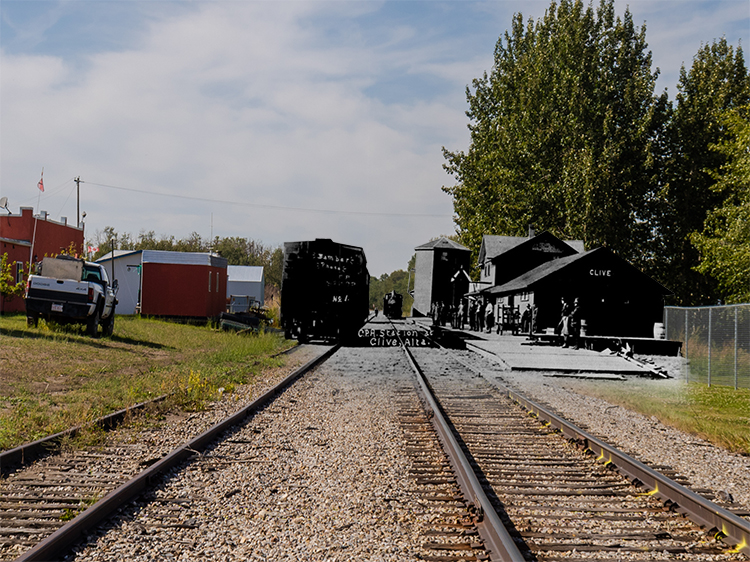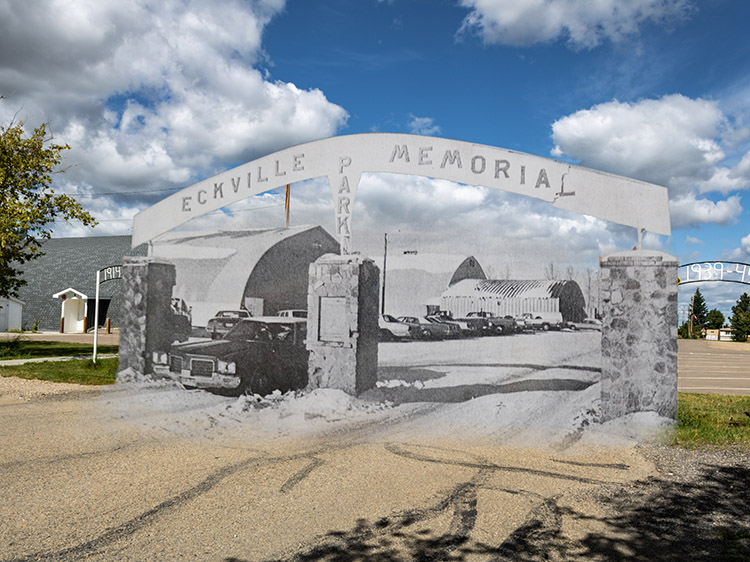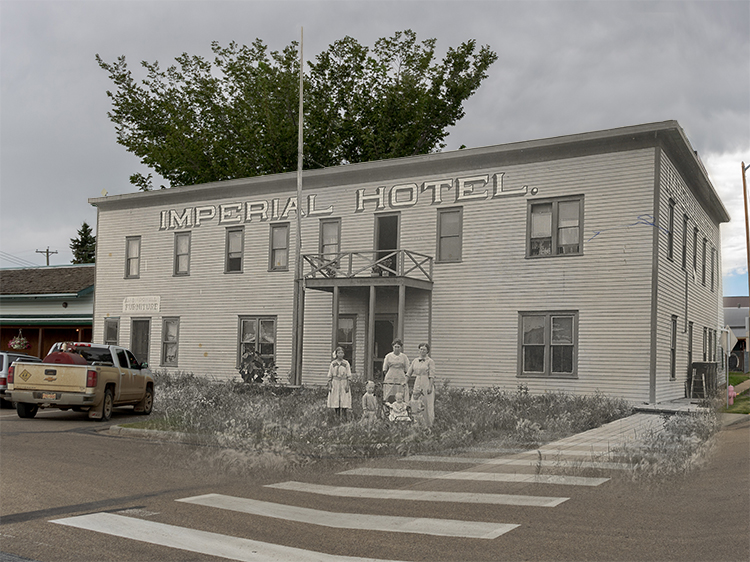Europeans began settling the centrally located area near Blackfalds in the late 1890s, and by the early 1900s, the population increased, due to the thriving townsite along the railway line and the fertile lands which became a progressive farming district. Now, this vibrant and youthful community is well known for its outstanding sporting and leisure opportunities, trails and parks, and family friendly events. While in the community, we hope you’ll join in our local enthusiasm for play and also learn about the thriving businesses and dedicated residents that have brought about the growth of Blackfalds.
This project is a partnership with Blackfalds & Area Historical Society
We respectfully acknowledge the City of Blackfalds is on Treaty 6 territory, a traditional meeting grounds, gathering place, and traveling route to the Cree, Saulteaux, Blackfoot, Métis, Dene and Nakota Sioux. We respectfully acknowledge all the many First Nations, Métis, and Inuit whose footsteps have marked these lands for centuries.
Virtual Tours
Walking Tours
Explore
Blackfalds
Then and Now Photos
C & E Trail
Blackfalds & Area Historical Society
ca. 1898-1902
The C & E Trail on the north side of the Blindman River, just south of Blackfalds, in the early 1900s, where the traffic bridge and the CPR bridge cross the river. The traffic bridge is now a pedestrian bridge and part of the Trans Canada Trail.
Percy Gregson Home
Blackfalds & Area Historical Society
ca. 1907
This house was built in 1903 by Percy Gregson, brother to Arthur and Leopold Gregson, part of the earliest family that came to this area in the 1890s. Percy was a solicitor, church warden, Justice of the Peace, village secretary, and secretary for the school board and several companies in the village, as well as starting the first newspaper in town. This house was also the first Natural History Museum west of Ontario, until 1907, when Percy went back to England.
Blackfalds Creamery
Blackfalds & Area Historical Society
ca. 1909
The Blackfalds Creamery was started in 1903 and operated the company as "The Blackfalds Butter and Cheese Manufacture Association, Limited" of which they sold shares in. By 1914 the creamery sold at auction and was purchased by A. D. Gregson. In 1917 the creamery was purchased by the Edmonton City Dairy Ltd.
Heading to the Bull Sale
Blackfalds & Area Historical Society
ca. 1915
Edwin Plumb and his Shorthorn bull, at the Railway Station, heading to the Calgary Bull Sale, circa 1915.
Matthias Home
Blackfalds & Area Historical Society
ca. 1920
Ephraim E. Mathias lived in this home starting in about 1910 with his family. It was not in the village of Blackfalds then, it was on his farm land where he was the first farmer in the area to grow No. 1 Marquis wheat. Mathiases lived here until 1959, when the farm was sold. The home burned down in 1963 and another was built. This location became a tree nursery and greenhouse before the town purchased it in 2008 for the site of the Abbey Centre.
Railway Station
Blackfalds & Area Historical Society
ca. 1920s
The Blackfalds Railway Station was built in 1904, along the CPR tracks. It was demolished in 1968.
Cutting Lumber
Blackfalds & Area Historical Society
ca. 1930s
Fred Bills cutting firewood and lumber, while clearing the land directly east of Blackfalds in the 1930s. This land was farmland until development started in the 1990s.
Blackfalds Church
Blackfalds & Area Historical Society
ca. 1940s
Built in 1902 as a Presbyterian Church, the land and most of the funds and labor to build this wooden structure were donated by the pioneers of the district.
The Wadey Home
Blackfalds & Area Historical Society
ca. 1940s
The Wadey house is now called the Wadey Centre, home of the Blackfalds & Area Historical Society and the town’s Visitor Information Centre. The house was moved in November of 2016 to this location, from its original location on the Wadey farm that was 3 blocks east. The house was built in 1916 by George Wadey. It was an Eaton’s package home, ordered from a catalogue, and the Wadey family lived in it from 1916 until about 1982.








